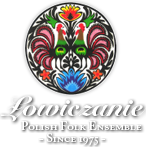Active Repertoire of Łowiczanie
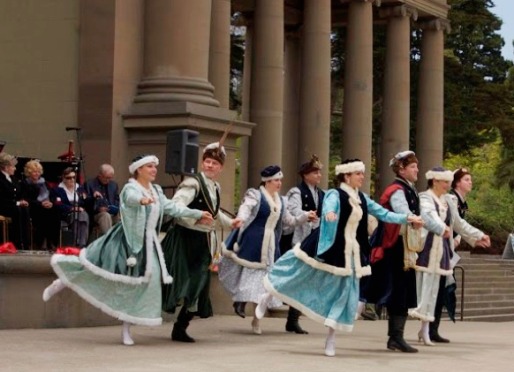
Mazur
Mazur is one of the five "National" dances of Poland, and - next to the "Polonez" - the best-known form. Often called "Mazurka" by people outside Poland, the Mazur demands strength, speed and grace from its performers. This choreography is danced to the famous "white" Mazur, an early 19th-century melody, and was performed in the wee hours of the morning of a social ball, before guests went in to "supper."
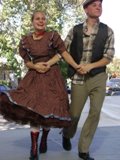
Dances of Old Warsaw
Dances of Old Warsaw
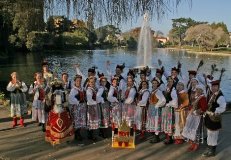
Krakowiak
Songs and Dances from Eastern Krakowiak get their unique flavor of the dances from the eastern side of the Krakow region are enlivened with influences from the surrounding areas of Sacz and Rzeszow. A delightful selection of favorites include a "stajer" (in a ¾ timing similar to a waltz) a lively "oberek" and of course several rousing and demanding polkas with distinctive steps. The exquisite costumes for this suite were created in Poland with all the characteristic fine embroidery and attention to detail for Poland's regional dress is famed.
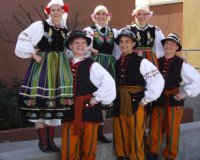
Kujawiak/Oberek
Songs and Dances from the Lowicz Region- These dances are performed in the unique, handcrafted costumes of the people from the central plains region of Poland - its heartland: Mazowsze. Weighing over 10 pounds each, the women's costumes do not manage to ground the dancers. The spirited forms include a staccato, lively "Polka Lowicka", a lyrical Kujawiak, and a dramatic final Oberek.
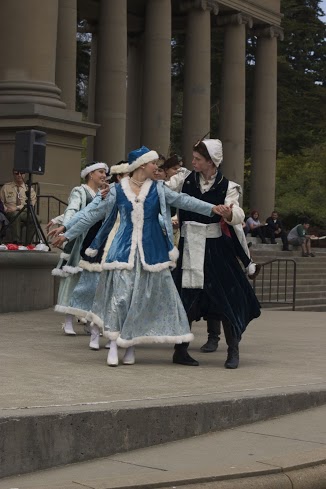
Pan Taduesz Polonez
Polonez from "Pan Tadeusz- The Polonez, one of five "National" dances from Poland, is one of Poland's most widely-recognized traditional dance forms. At the height of its popularity in the 3rd quarter of the 19th century, the Polonez was enormously popular throughout the ballrooms of Europe, as far east as Moscow. The dance is a stately walking processional in ¾ timing with specific figures for couples and groups. This choreography is created to the majestic new millennium composition Wojciech Kilar by for the film of the same name.
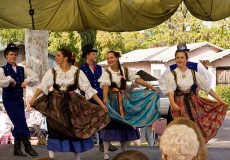
Cieszyn
Songs and Dances from Cieszyn- Cieszyn is one of the oldest towns of Poland located on its southern border with Czech Republic in the high Beskid mountains. In spite of various political and administrative changes, it always remained culturally Polish. In this piece, some of the most popular native dances and some of foreign origin - including the French Quadrille and the Hungarian-influenced "Czardasz Slaski" are presented.
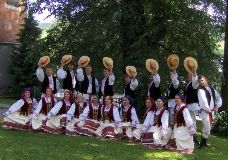
Biale Podlasie
Songs and Dances from Biale Podlasie- This large ethnographic region runs along the central part of the eastern border of Poland where it meets both Belarus and Ukraine. In this multi-culturally rich area, traditionally beloved melodies were known to a variety of communities: Belarussians, Ukrainians, Poles, and Jewish inhabitants. The beautiful songs and dances - many in a minor key giving a distinctive flavor - are combined in Lowiczanie's 10-minute suite.
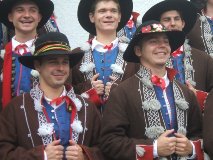
Rzeszow Men
Songs and Dances from Rzeszow- The southeastern farming region of Rzeszow boasts a huge number of lively and enormously energetic polkas with a variety of challenging steps. The dances are punctuated with characteristic hand movements and teasing songs between the sexes often with bawdy or suggestive lyrics. The antidote to all the hyper-activity is the dance called "Slow" where partners rest on each other and briefly drag about.
Szot Madziar- literally means "walking Hungarian," and the music and steps drawn from the Hungarian czardas reminds us of the importance of these peoples as traders and empire-builders within Poland's borders.
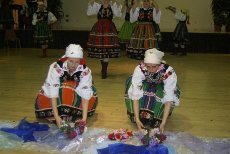
Sobotki
Sobotki- The setting is the Solstice - near or on St. John's Eve in the Catholic Liturgical calendar- in the forest. The Sobotki tradition has young women making flower wreaths to be placed with candles on the nearby river, where the wreaths - each symbolizing its owner - are soon to be claimed by their lovers. All the young people will party that night together in the forest, and from this special night will emerge at least one wedding. In this short piece, girls walk solemnly through a forest with their lighted wreaths held high, singing their hope for the magic of their offerings. They conclude by laying their wreaths on the "river," and let them float away.
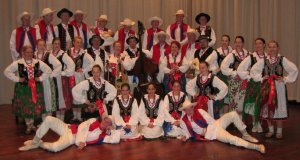
Zywiec
Songs and Dances from the Zywiec Highlanders- From the southwestern corner of the Trans-Carpathians come these dynamic and captivating dances from just one tiny mountain area. This living Zywiec area mountain culture is vigorously displayed in Lowiczanie's choreography that highlights the knee-work and other acrobatics of the men's competitive dance moves. In the final song and accompanying dance, the Highlanders sing of how they will, indeed, dance and dance some more until their kierpce (traditional leather shoes with straps) fall off!
Przeworsk
Songs and Dances from Przeworsk- A sub-region of the wider Rzeszow area, this little town boasts some compelling dances. The typical polka form is noted for its tempo changes - from calm to just short of frenzied. The challenges to the dancers are not only the speed and tempo changes, but also the fact in some polkas the men and the women perform different steps in a separate timing while dancing as a pair.
